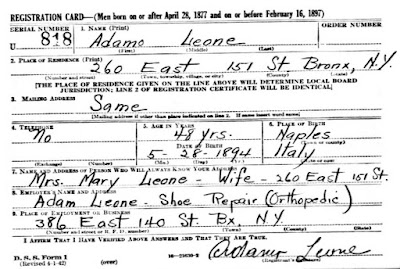I'm happy to pay for my ancestry.com subscription. I have full access for less than a dollar a day.
But many genealogy fans prefer to go the all-for-free route.
Well, there's a newcomer to the genealogy resource field. MooseRoots is a completely free site that can help you find birth, death and marriage dates and places, and a lot more. (See also What To Do When You Have No Birth or Death Record.)
| Results of a search for Grandma's birth record. |
- U.S. Census records
- State birth records
- State death records
- State marriage and divorce records (Australian records, too)
- Casualties from several wars
I began testing the site by looking for my grandmother's New York City birth record from 1899. I already have a copy of her birth record from the New York City Municipal Archives. The main fact I learned from her birth record was that her middle name was Carmina—and that's not what she told us it was.
The MooseRoots result was disappointing because it didn't include her parents' names. But it did include the certificate number. That would be enough for me to find the original on microfilm at the archives.
Next I searched the same collection for anyone with her last name to see if I would find her siblings. I found her two brothers, but the transcriptions of their first names were ridiculous. I found two misspelled Alfredos, and I wouldn't know which one was my great uncle if I hadn't already known his birthday.
But the lack of parents' names is based on the record collection, so I don't blame MooseRoots. I checked California birth records because I know they include the mother's maiden name. And those maiden names appeared in the results. But the California birth records did not include a certificate number.
 |
| Easily share various parts of the results page. |
I was very impressed by MooseRoots' collection of Japanese-American Internment Camp records. Unfortunately, you can't search for a specific name or sort the results, so I didn't see the two last names of my in-laws. (See also Can Genealogy Research Be Painful?.)
I chose a random person named Tanaka (another family name in my husband's tree), and I was impressed with the results.
The website generates a narrative including lots of facts about Takanosu Tanaka: his year and place of birth, that he was widowed, the name of the "camp" where he was detained (Tule Lake), and much more.
As I scrolled down the page I found visualizations of Takanosu's facts. And this is the thing that makes MooseRoots unique: visualizations.
A company called Graphiq powers the site. Graphiq compiles facts into colorful graphs to make them easier to understand.
I believe MooseRoots has plans to become a much richer genealogy resource. When you click a person's name in your results list, you have the opportunity to add their photo once you create a free account. I hit a snag when I tried to register with my Facebook account. Instead, I chose the Google+ login option. That worked, but then the "Add or Edit Photos" button didn't do anything. So, they've got some kinks to iron out.
 |
| This video includes facts unique to your ancestor. |
The 1940 Census results included a nice surprise: a customized video that includes the census facts for the person you chose. There's also a scrollable list of other people on the same census sheet, with clickable names. (See also How To Squeeze Everything Out of the Census.)
When you're visiting the site, be sure to click the More menu at the top of the page to get an idea of which collections may be the most helpful to you.
Happy [moose] hunting.




















